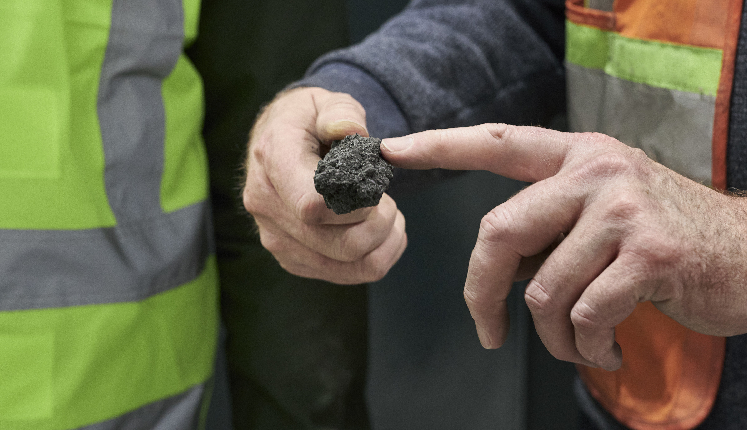
As circularity becomes one of the key tenets of sustainability practices, incorporating waste valorization into industrial activities is becoming more important than ever. CarbiCrete’s innovative technology uses steel slag, an industrial byproduct, and CO2 to transform the concrete manufacturing process. But what is steel slag, CarbiCrete’s not-so-secret ingredient? Let’s take a deep dive into the definition of steel slag, its differences from other types of slag, and its key importance to the CarbiCrete process.
Generally, the term “slag” is used to refer to the byproduct generated during iron or steel manufacturing processes. It is rich in metal oxides and other useful minerals that can be upcycled into valuable end-products, minimizing waste and contributing the practices of the circular economy.
Iron slag, also known as Blast Furnace Slag, has virtually a 100% utilization rate globally. Its wide range of applications include as an aggregate for concrete and asphalt mixtures, Portland clinker, material for civil engineering works, and ground improvement material.
Steel slag, on the other hand, is produced when impurities are separated from molten steel in a Basic Oxygen Furnace (BOF) or an Electric Arc Furnace (EAF). It has a significantly lower utilization rate than iron slag, and consequently is often sent to landfill. Its applications include use as an aggregate base, as well as use in embankments, shoulders, and asphalt.
As green steel production via EAF brings new sustainably-minded initiatives to the industry, steel slag comes from increasingly favourable sources. According to the USGS, “the majority of U.S. steel slag production is from electric arc furnaces, which accounted for an estimated 72% of U.S. steel production in 2022 owing to the overall cost advantages of environmental factors.”
Although ground granulated blast furnace slag (GGBFS) and other forms of iron slag have long been utilized their use in standard concrete-making, these technologies all continue to use cement. While partially reducing cement content is a step in the right direction, only complete replacement of cement in the concrete mix can radically reduce the heavy emissions resulting from cement use.
Unlike iron slag, steel slag can be used for carbon mineralization, hence its key role in CarbiCrete technology. Compared to cement, which is cured through a hydration reaction with water, steel slag has limited hydraulic properties and requires a mineralization reaction with CO2 to be cured.
Both cement-based concrete and steel slag-based concrete develop calcium silicate hydrates during the curing process. But while cement-based concrete is further strengthened through the formation of calcium hydroxide, CarbiCrete’s patented steel slag-based concrete uses carbon dioxide curing to develop calcium carbonates through mineralization reactions.
In utilizing steel slag, CarbiCrete contributes to waste valorization and landfill avoidance while producing a valuable end-product that acts as a carbon sink. By utilizing an industrial byproduct in the creation of a low-carbon concrete product, CarbiCrete technology can contribute to the circular economy and the trend toward decarbonization in a hard-to-abate industry.



